Nissan Juke vs VW Polo – Which model is better for everyday use?
Both models have their strengths – but which one suits you more?
Compare performance, efficiency, price and space directly: Nissan Juke or VW Polo?
Costs and Efficiency:
Looking at overall running costs, both models reveal some interesting differences in everyday economy.
VW Polo has a clearly perceptible advantage in terms of price – it starts at 17000 £, while the Nissan Juke costs 21400 £. That’s a price difference of around 4384 £.
Fuel consumption also shows a difference: Nissan Juke manages with 4.70 L and is therefore barely noticeable more efficient than the VW Polo with 5.10 L. The difference is about 0.40 L per 100 km.
Engine and Performance:
Under the bonnet, it becomes clear which model is tuned for sportiness and which one takes the lead when you hit the accelerator.
When it comes to engine power, the VW Polo has a noticeable edge – offering 207 HP compared to 143 HP. That’s roughly 64 HP more horsepower.
In acceleration from 0 to 100 km/h, the VW Polo is convincingly quicker – completing the sprint in 6.50 s, while the Nissan Juke takes 10.10 s. That’s about 3.60 s faster.
In terms of top speed, the VW Polo performs clearly perceptible better – reaching 240 km/h, while the Nissan Juke tops out at 180 km/h. The difference is around 60 km/h.
There’s also a difference in torque: VW Polo pulls noticeable stronger with 320 Nm compared to 200 Nm. That’s about 120 Nm difference.
Space and Everyday Use:
Beyond pure performance, interior space and usability matter most in daily life. This is where you see which car is more practical and versatile.
Both vehicles offer seating for 5 people.
In curb weight, VW Polo is a bit lighter – 1143 kg compared to 1274 kg. The difference is around 131 kg.
In terms of boot space, the Nissan Juke offers slightly more room – 422 L compared to 351 L. That’s a difference of about 71 L.
In maximum load capacity, the Nissan Juke performs a bit better – up to 1305 L, which is about 180 L more than the VW Polo.
When it comes to payload, VW Polo barely noticeable takes the win – 457 kg compared to 427 kg. That’s a difference of about 30 kg.
Who comes out on top?
Overall, the VW Polo shows itself to be dominates this comparison and secures the title of DriveDuel Champion.
It convinces with the more balanced overall package and proves to be the more versatile choice for everyday use.
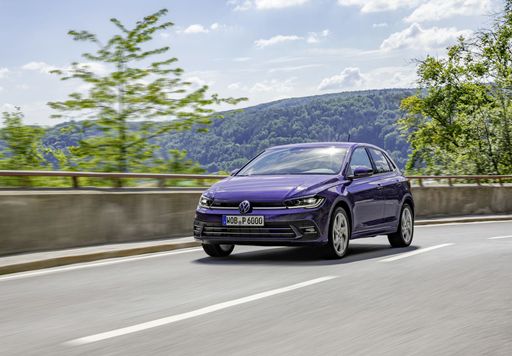 @ Volkswagen AG / VW Media
@ Volkswagen AG / VW Media
VW Polo
Nissan Juke
The Nissan Juke is a pocket-sized crossover that refuses to blend in, with quirky styling and a cheeky stance that turns heads at every traffic light. It’s ideal for shoppers who value personality and nimble urban driving over maximum practicality, delivering surprising pep and a well-equipped feel for everyday fun.
details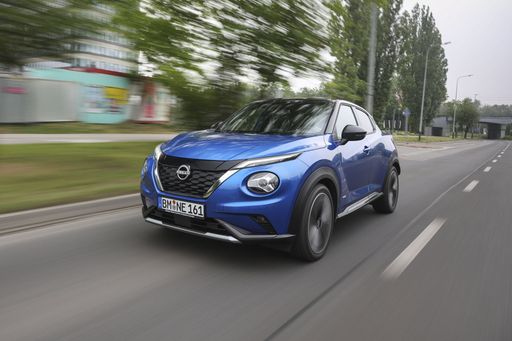 @ Nissan Motor Corporation
@ Nissan Motor Corporation
 @ Nissan Motor Corporation
@ Nissan Motor Corporation
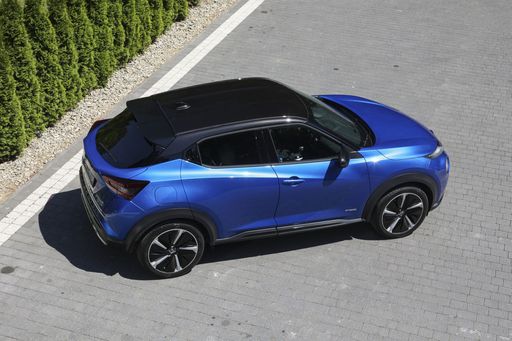 @ Nissan Motor Corporation
@ Nissan Motor Corporation
 @ Nissan Motor Corporation
@ Nissan Motor Corporation
VW Polo
The Polo is a small car with surprisingly grown-up refinement, delivering comfortable packaging, crisp handling and a build quality that punches above its class. For buyers who want a practical, fuss-free hatch that still feels a little premium, it’s a sensible, slightly cheeky choice you’ll enjoy every day.
details @ Volkswagen AG / VW Media
@ Volkswagen AG / VW Media
 @ Volkswagen AG / VW Media
@ Volkswagen AG / VW Media
 @ Volkswagen AG / VW Media
@ Volkswagen AG / VW Media
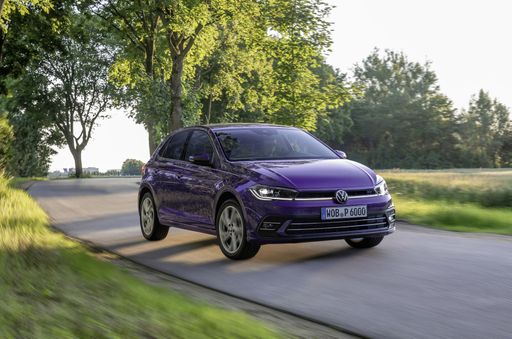 @ Volkswagen AG / VW Media
@ Volkswagen AG / VW Media
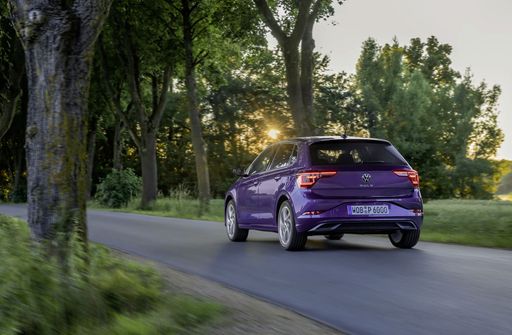 @ Volkswagen AG / VW Media
@ Volkswagen AG / VW Media
 @ Volkswagen AG / VW Media
@ Volkswagen AG / VW Media
 @ Nissan Motor Corporation
@ Nissan Motor Corporation
|
 @ Volkswagen AG / VW Media
@ Volkswagen AG / VW Media
|
|
|
|
Costs and Consumption |
|
|---|---|
|
Price
21400 - 30100 £
|
Price
17000 - 30400 £
|
|
Consumption L/100km
4.7 - 6 L
|
Consumption L/100km
5.1 - 6.5 L
|
|
Consumption kWh/100km
-
|
Consumption kWh/100km
-
|
|
Electric Range
-
|
Electric Range
-
|
|
Battery Capacity
0.60 kWh
|
Battery Capacity
-
|
|
co2
107 - 136 g/km
|
co2
116 - 148 g/km
|
|
Fuel tank capacity
46 L
|
Fuel tank capacity
40 L
|
Dimensions and Body |
|
|---|---|
|
Body Type
SUV
|
Body Type
Hatchback
|
|
Seats
5
|
Seats
5
|
|
Doors
5
|
Doors
5
|
|
Curb weight
1274 - 1405 kg
|
Curb weight
1143 - 1378 kg
|
|
Trunk capacity
354 - 422 L
|
Trunk capacity
351 L
|
|
Length
4210 mm
|
Length
4074 mm
|
|
Width
1800 mm
|
Width
1751 mm
|
|
Height
1593 mm
|
Height
1431 - 1451 mm
|
|
Max trunk capacity
1237 - 1305 L
|
Max trunk capacity
1125 L
|
|
Payload
405 - 427 kg
|
Payload
432 - 457 kg
|
Engine and Performance |
|
|---|---|
|
Engine Type
Petrol, Full Hybrid
|
Engine Type
Petrol
|
|
Transmission
Manuel, Automatic
|
Transmission
Manuel, Automatic
|
|
Transmission Detail
Manual Gearbox, Dual-Clutch Automatic, Automatic Gearbox
|
Transmission Detail
Manual Gearbox, Dual-Clutch Automatic
|
|
Drive Type
Front-Wheel Drive
|
Drive Type
Front-Wheel Drive
|
|
Power HP
114 - 143 HP
|
Power HP
80 - 207 HP
|
|
Acceleration 0-100km/h
10.1 - 11.8 s
|
Acceleration 0-100km/h
6.5 - 15.6 s
|
|
Max Speed
166 - 180 km/h
|
Max Speed
171 - 240 km/h
|
|
Torque
200 Nm
|
Torque
93 - 320 Nm
|
|
Number of Cylinders
3 - 4
|
Number of Cylinders
3 - 4
|
|
Power kW
84 - 105 kW
|
Power kW
59 - 152 kW
|
|
Engine capacity
999 - 1598 cm3
|
Engine capacity
999 - 1984 cm3
|
General |
|
|---|---|
|
Model Year
2024
|
Model Year
2024 - 2025
|
|
CO2 Efficiency Class
D, E, C
|
CO2 Efficiency Class
D, E
|
|
Brand
Nissan
|
Brand
VW
|
What drive types are available for the Nissan Juke?
Available configurations include Front-Wheel Drive.
The prices and data displayed are estimates based on German list prices and may vary by country. This information is not legally binding.
